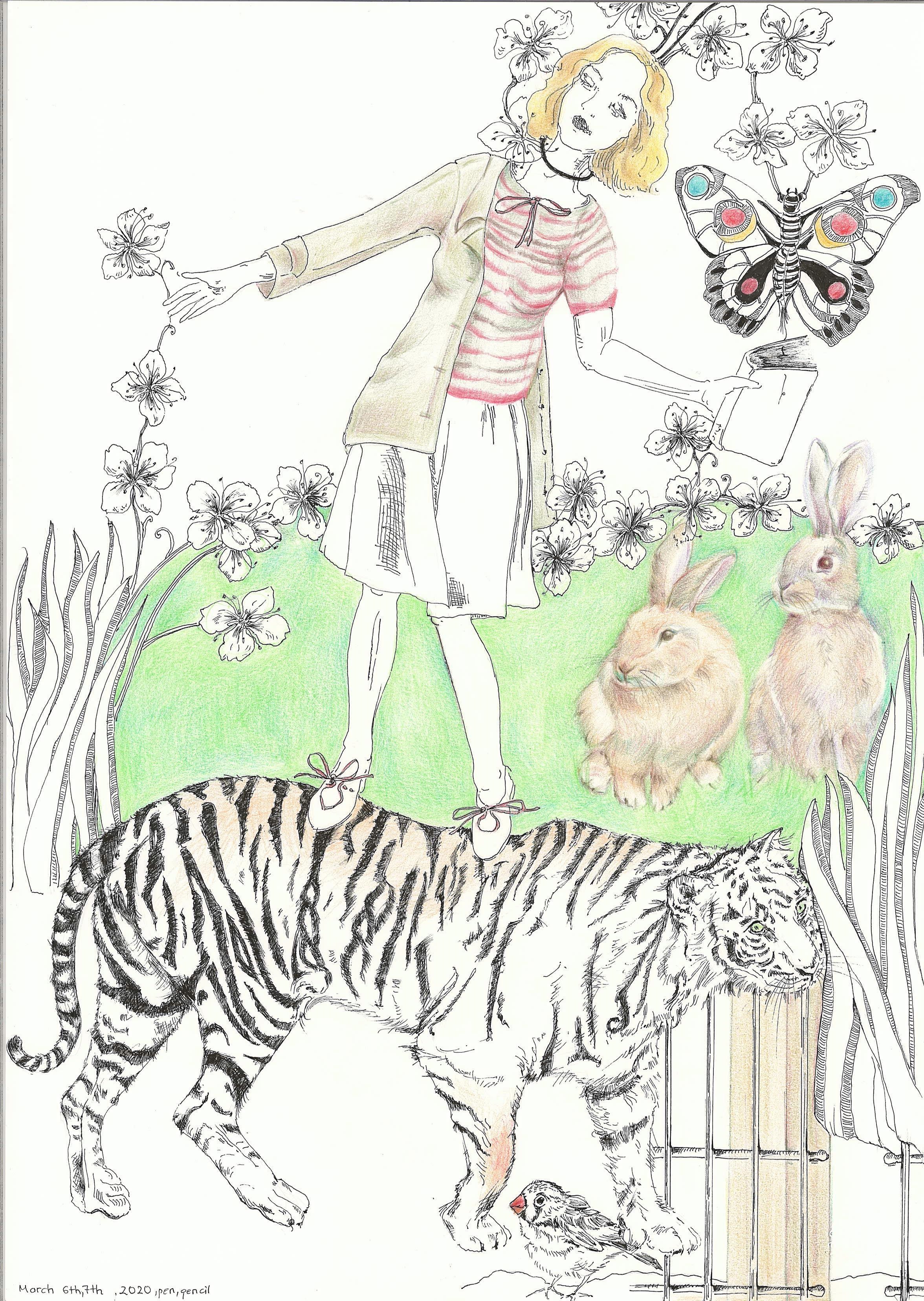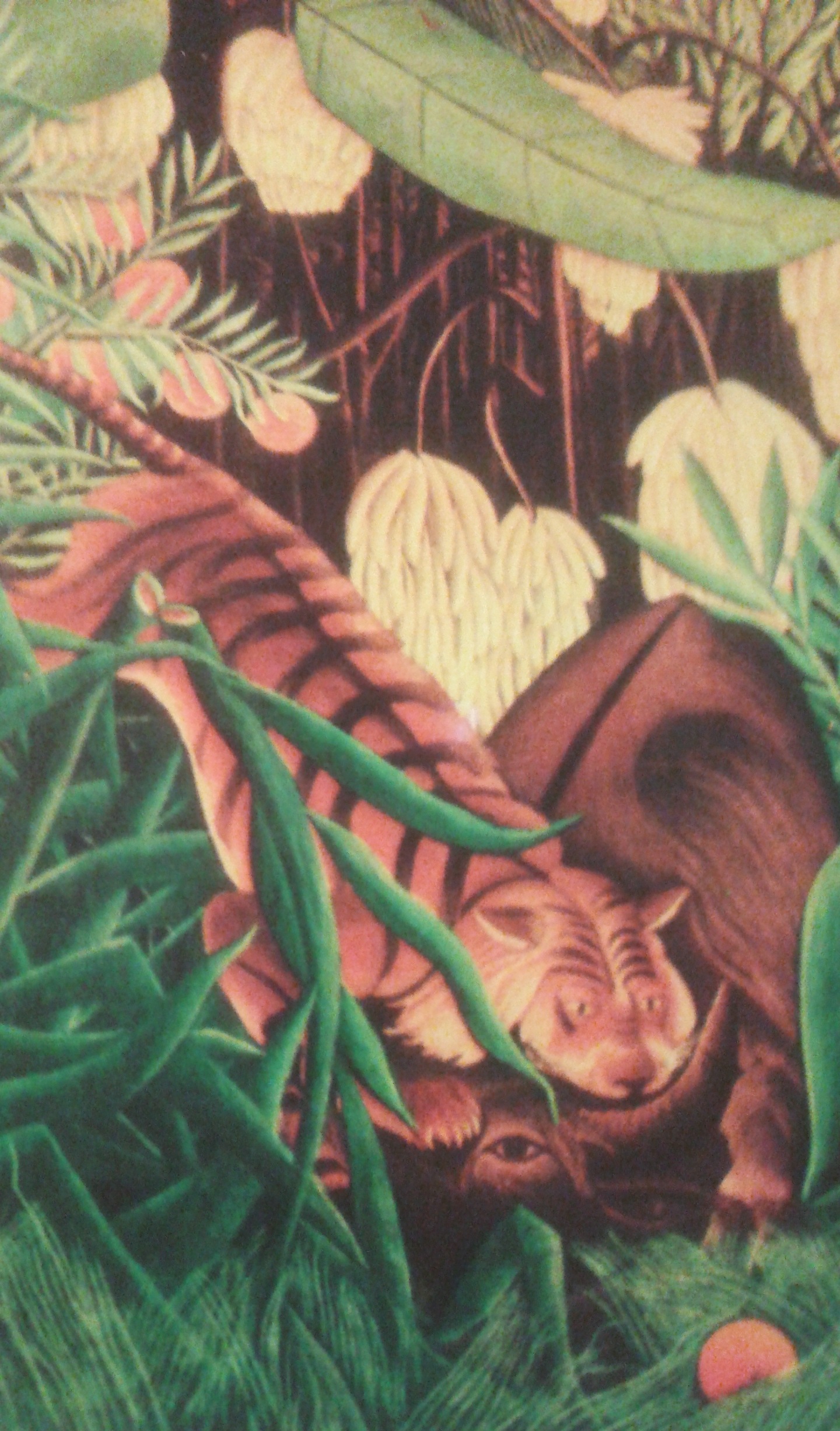Edited
You look a tiger in the eye. And trust without fear. That’s what it is to be a woman. (From Jojo Rabbit)
Recognize When There’s No Tiger in the Bushes or That You Can Deal with It (Rick Hanson, Just One Thing)
‘The growing good of the world is partly dependent on unhistoric acts; and that things are not so ill with you and me as they might have been, is half owing to the number who lived faithfully a hidden life, and rest in unvisited tombs.’ (George Eliot)

Today’s drawing is influenced by Jojo Rabbit, directed by Taika Waititi, whose mother is of Jewish descent and father is Maori. The film is set in Nazi Germany towards the end of the war, featuring a childish version of Hitler, who has unicorn for dinner, while everyone else at the table is having watery soup. He is the imaginal friend of a ten year old Hitler Youth member, Johannes (Jojo) Betzler, who is desperate to belong and has been indoctrinated to hate Jews and worship Hitler. Even so, and despite the mythology in his mind, he can’t bring himself to do cruel things like killing rabbits, and thus, he acquires the name Jojo Rabbit. Jojo’s father has gone missing in the war, his sister has died and he lives with his mother, Rosie, who has been hiding a Jewish teenage girl in their attic and is risking her life for what she believes. When Jojo finds Elsa he becomes conflicted between his burgeoning feelings for this new friend and his ‘brainwashed loyalty’ towards the Nazi regime.
I found the film aesthetically beautiful and tender. It is a different kind of commentary on the dark and destructive nature of fascism and racism with a lot of redemptive hope about humans and human affairs. It seems to profess faith in the power of individual action and resistance to bring about change. George Eliot wrote ‘The growing good of the world is partly dependent on unhistoric acts; and that things are not so ill with you and me as they might have been, is half owing to the number who lived faithfully a hidden life, and rest in unvisited tombs.’ Hopefully any kind of resistance is a force that ripples outwards and changes the boundaries of what we might consider possible. It is a kind of art comedy. It has a lot of colour for a film set during the war. The tall Gestapo man that comes round for inspection when Jojo’s mother is absent is like a figure from a Rene Magritte’s painting. the film opens with a Beatles song playing in the background and concludes with lines from a poem by R. M. Rilke:
‘Let everything happen to you. Beauty and terror. Just keep going. No feeling is final.’
Another theme in this narrative is that if we love someone we need to set them free to be themselves. Jojo will reach this understanding at the end of the film even though by then his mother will have died and his Jewish friend will be the only loved one he has. There are also other interesting threads of story within the story. From the beginning of the film, for instance, we see that Jojo cannot tie his shoelaces. Towards the end of the film we see him walking in the street. His attention is caught by a beautiful butterfly, which leads him to a place where people have been hung. As he looks up from the butterfly he sees his mother’s legs dangling. The shoe laces are undone. In a poignant scene the boy ties the shoelaces.
 As I spent several hours over two days creating the picture I realised that we may collectively carry our own personal versions of images from the film of war stories we have heard and history lessons we have digested, and the fear of persecution for one’s beliefs or for speaking up might always be lurking in some corner of our heart.
As I spent several hours over two days creating the picture I realised that we may collectively carry our own personal versions of images from the film of war stories we have heard and history lessons we have digested, and the fear of persecution for one’s beliefs or for speaking up might always be lurking in some corner of our heart.
Painting by Henri Rousseau
